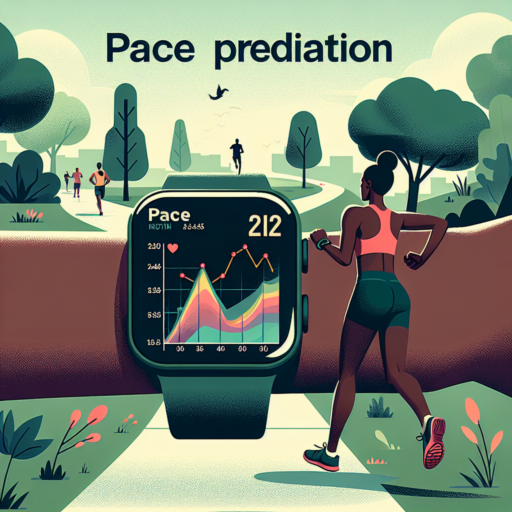How to calculate race pace?
Calculating your race pace is crucial for setting realistic goals and for structuring a training plan that aligns with your racing objectives. Whether you’re gearing up for a 5K, a marathon, or any distance in between, understanding how to calculate your race pace can give you a significant edge. This fundamental aspect of race preparation not only helps in optimizing your performance but also in ensuring you maintain a consistent speed throughout the race, avoiding the common pitfall of starting too fast and burning out too quickly.
One straightforward method to calculate your race pace is by using a recent race time as a benchmark. If you’ve recently completed a race at a different distance, you can use pace calculators available online to estimate your pace for your target race. These calculators use algorithms based on your past performance to predict future race times, helping you to tailor your training sessions with greater precision. This approach is particularly beneficial for those who have a specific time goal in mind.
Components of an Effective Race Pace Strategy
- Know Your Goal: Clearly defining your race goal is the first step towards understanding the pace you need to maintain.
- Understand Your Current Fitness Level: Your current level of fitness, as determined by recent races or timed trials, is crucial in setting a realistic pace.
- Use Technology Wisely: Leverage pace calculators and GPS watches to keep your training and race day pace on track.
Another aspect to consider when calculating your race pace is the specific conditions of your target race. Factors such as the race course profile (flat, hilly, or mixed terrain) and expected weather conditions on race day can significantly impact your pace. Fine-tuning your pace calculation to account for these variables can improve your race day strategy and help you to achieve a personal best.
No se han encontrado productos.
What is the difference between race pace and tempo run?
Understanding the distinction between race pace and tempo run is crucial for runners aiming to enhance their performance. Race pace refers to the speed at which a runner aims to complete an actual race. It’s a targeted pace, often practiced in shorter, more intense training sessions to simulate race conditions. This type of training is specific to the race distance, allowing athletes to adapt both mentally and physically to the demands of their goal pace. It’s essential in preparing the body to endure the speed and intensity over the race duration without losing form or efficiency.
On the other hand, a tempo run, often described as a comfortably hard effort, is designed to improve a runner’s lactate threshold—the speed above which the body begins to accumulate lactate in the blood faster than it can be removed, leading to fatigue. These runs are typically longer than race-pace efforts but carried out at a controlled pace that feels challenging yet maintainable over a significant distance. The purpose behind a tempo run is to push the body’s endurance capabilities, increasing the speed at which a runner can maintain without overstraining.
While both strategies are integral to a well-rounded training plan, their primary difference lies in the intensity and duration of the workout. Race pace training is about specificity and mimicking the race environment to enhance physical stamina and psychological readiness. In contrast, tempo runs focus on building endurance and metabolic efficiency, improving a runner’s capacity to sustain higher speeds over longer periods. Identifying and incorporating both into a training regimen can lead to significant improvements in overall performance, speed, and endurance.
What is race pace in F1?
Race pace in Formula 1 (F1) refers to the consistent speed at which a driver can perform throughout the race, under varying fuel loads and tyre wear conditions. Unlike qualifying laps, which are about extracting maximum speed from the car over one or two laps, race pace is about maintaining a high level of speed over the entire race distance. It’s a vital component of race strategy, impacting decisions on tyre changes, fuel management, and overtaking tactics.
Teams invest significant effort in optimizing their cars’ race pace during practice sessions. This preparation involves balancing the car’s setup for both short bursts of speed and longer stints, aiming to deliver a vehicle that can handle well, conserve its tyres, and maintain a competitive speed throughout. The challenge lies in predicting how the car, tyres, and fuel will behave over the race distance, under different track temperatures and weather conditions.
Drivers play a crucial role in managing race pace. They must execute the team’s strategy by managing their tyre wear, conserving fuel when necessary, and choosing when to push the car to its limits. A driver’s ability to adapt to changing race conditions and communicate effectively with their team is crucial in maintaining an optimal race pace. Successful management of these elements can often lead to winning strategies, even if a car isn’t the fastest in the field in terms of outright speed.
What is the pacing for a race?
Understanding pacing in the context of a race is essential for both new and experienced runners. Pacing refers to the rate at which a participant traverses distance over time during a race. It’s not just about how fast one can run, but how consistently one can maintain specific speeds throughout the event. Proper pacing can make the difference between hitting a personal best and running out of steam before the finish line.
There are various strategies when it comes to effective pacing. Some runners prefer starting out at a slower pace and gradually increasing their speed, known as ‘negative splits.’ This method is often recommended for marathons and longer races, where conserving energy for the latter stages is crucial. On the other hand, ‘positive splits’ involve starting at a faster pace and then slowing down. While this can be effective for shorter distances, it requires a good understanding of one’s limits to avoid premature fatigue.
Technology has become a runner’s ally in mastering pacing. With the advent of smartwatches and running apps, athletes can monitor their pace in real-time, adjusting their speed to hit precise targets. This data not only aids in training but also significantly impacts race day strategy. Coupled with a well-thought-out pacing plan, runners can optimize performance, ensuring energy reserves are adequately managed until crossing the finish line.




